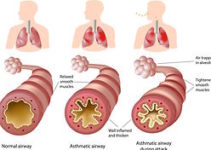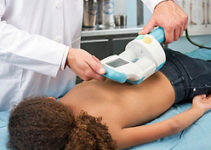
An alternative to heart transplantation could one day be in the cards for patients with heart failure; scientists have created a “bionic heart patch” that allows doctors to remotely deliver tissue regeneration drugs to patients in real-time.
The idea for the novel device came from Dr. Tal Dvir and Ron Feiner, both of the Department of Molecular Microbiology and Biotechnology at Tel Aviv University (TAU) in Israel.
They publish the details of their creation in the journal Nature Materials.
As of today, there are 4,145 people waiting for a heart transplant in the US. Sadly, around 25% of these individuals will die before they receive one, highlighting the need to identify other treatment options for patients with end-stage heart failure.
Now, Prof. Dvir and colleagues believe they may have developed such an alternative: a bionic heart patch consisting of both organic and engineered elements, which they say can effectively repair heart tissue permanently damaged by heart attack or heart disease.
In fact, the team says the patch’s capabilities surpass those of cardiac tissue alone.
“With this heart patch, we have integrated electronics and living tissue,” says Dr. Dvir. “It’s very science fiction, but it’s already here, and we expect it to move cardiac research forward in a big way.”
“Until now, we could only engineer organic cardiac tissue, with mixed results,” he continues. “Now we have produced viable bionic tissue, which ensures that the heart tissue will function properly.”
Patch could offer remote cardiac tissue regeneration
The team created the bionic heart patch by engineering organic tissue. The tissue contains living cardiac cells, electrodes that sense tissue function and administer electrical stimulation, as well as electroactive polymers that have the ability to release drugs upon request.
Patch could offer remote cardiac tissue regeneration
The team created the bionic heart patch by engineering organic tissue. The tissue contains living cardiac cells, electrodes that sense tissue function and administer electrical stimulation, as well as electroactive polymers that have the ability to release drugs upon request.

“We first ensured that the cells would contract in the patch, which explains the need for organic material,” says Dr. Dvir. “But, just as importantly, we needed to verify what was happening in the patch and regulate its function. We also wanted to be able to release drugs from the patch directly onto the heart to improve its integration with the host body.”
The idea of the patch is to allow doctors to remotely treat patients who have permanent cardiac tissue damage as a result of heart attack or heart disease. Explaining how this would work, Dr. Dvir says:
“Imagine that a patient is just sitting at home, not feeling well. His physician will be able to log onto his computer and this patient’s file – in real-time. He can view data sent remotely from sensors embedded in the engineered tissue and assess exactly how his patient is doing. He can intervene to properly pace the heart and activate drugs to regenerate tissue from afar.”
Dr. Dvir says the longer-term goal for the patch is for it to be able to treat patients of its own accord, eliminating the need for assistance from health care providers. For example, if the device detects inflammation in the heart, it would release an anti-inflammatory medication.
Dr. Dvir says the bionic heart patch represents a “breakthrough” in cardiac research and could offer an effective alternative to heart transplantation, but he admits that it may be a while before the device is clinically available.
“I would not suggest binging on cheeseburgers or quitting sports just yet. The practical realization of the technology may take some time,” he says. “Meanwhile, a healthy lifestyle is still the best way to keep your heart healthy.”
Written by Honor Whiteman


